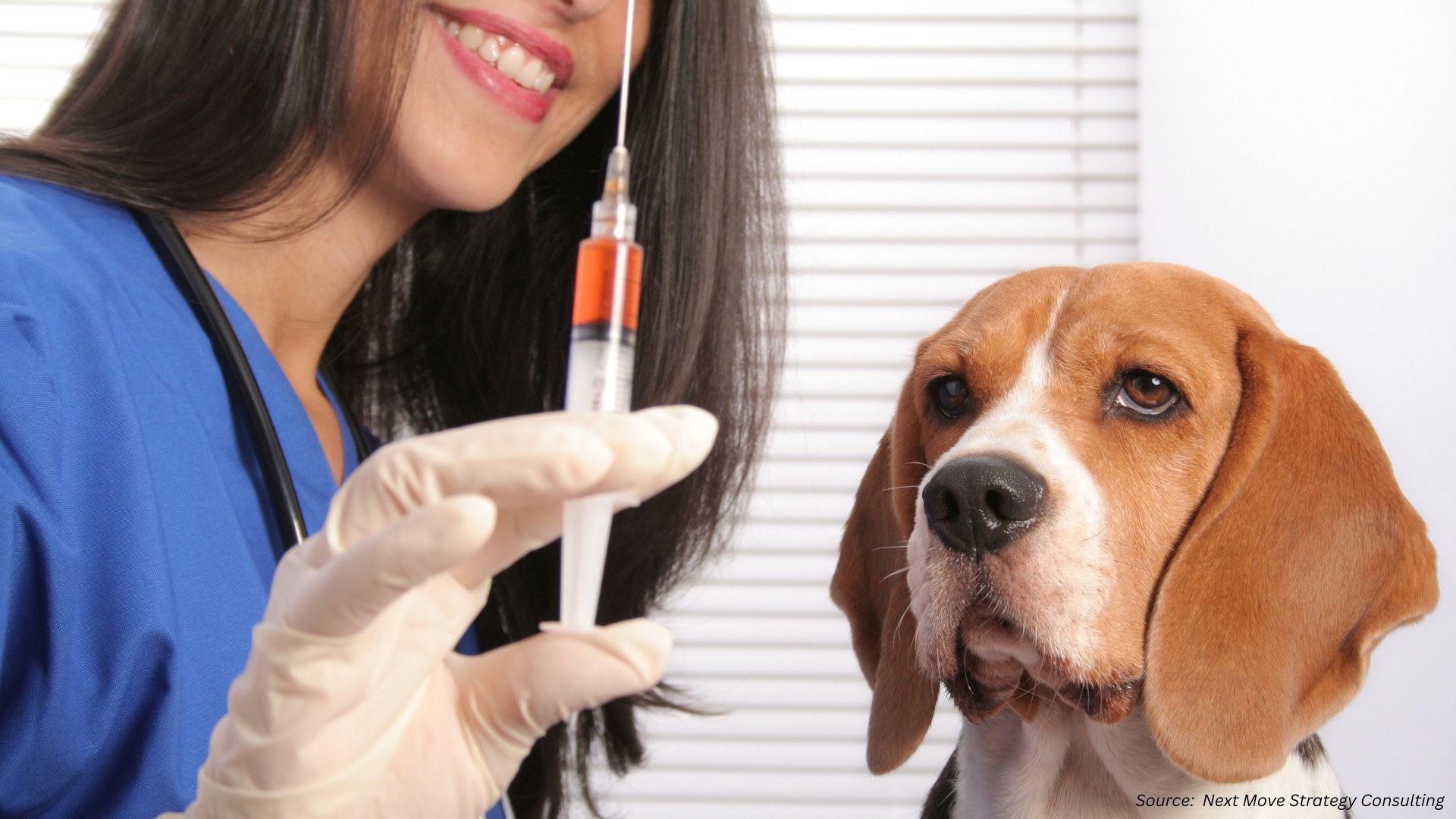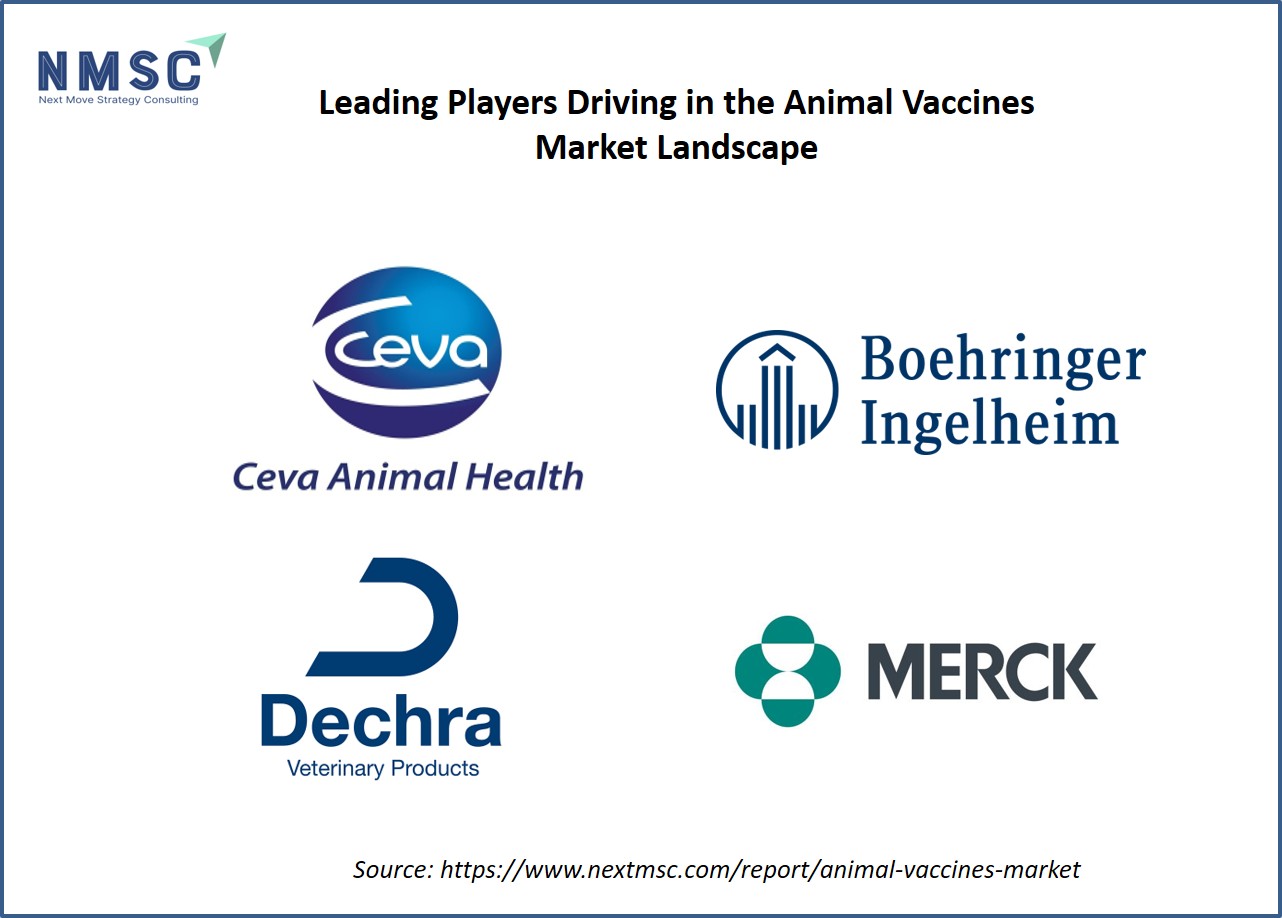The Role of Animal Vaccines in Shaping COVID-19 Vaccine Strategies
Published: 2025-09-09

The development of effective COVID-19 vaccines relies on a complex interplay of scientific research, including studies involving animals. These studies provide critical insights into how vaccines perform against evolving SARS-CoV-2 variants. The World Health Organization (WHO) Technical Advisory Group on COVID-19 Vaccine Composition (TAG-CO-VAC) emphasizes the importance of animal vaccine data to guide decisions on updating vaccine antigen compositions.
Why Animal Vaccines Matter
Animal studies are a cornerstone of vaccine research. They allow scientists to test vaccine candidates in controlled settings, observing immune responses to specific SARS-CoV-2 variants.
According to the report by Next Move Strategy Consulting, the global Animal Vaccines Market size is expected to reach USD 18.96 billion by 2030, with a CAGR of 7.1% from 2022 to 2030.
The WHO’s TAG-CO-VAC uses data from animal antisera (blood serum containing antibodies) to assess how vaccines perform against variants like JN.1, KP.2, and LP.8.1. These studies help predict how vaccines might work in humans, offering a faster and safer way to evaluate vaccine effectiveness before clinical trials.
Animal models, such as hamsters and mice, are particularly valuable because they can be infected or immunized with specific variants to measure neutralizing antibody responses. This data informs decisions about which vaccine antigens—molecules that trigger an immune response—should be prioritized to combat circulating variants.
Animal vaccines provide essential data on immune responses, guiding the selection of vaccine antigens for human use.
-
Key Point: Animal studies help evaluate vaccine performance against SARS-CoV-2 variants.
-
Benefit: They offer a controlled, ethical way to test vaccines before human trials.
-
Relevance: Data from animals shapes WHO’s vaccine composition recommendations.
Who Are the Leading Players in the Global Animal Vaccines Market?
Major players in the global animal vaccines market include Ceva Sante Animale, Boehringer Ingelheim Animal Health, Durvet, Inc., Dechra Pharmaceuticals, Henry Schein Animal Health, Elanco, Merck Animal Health, Hipra Animal Health Limited, Zoetis, and Neogen Corporation. These companies focus on strategies such as acquisitions, product innovation, and new launches to strengthen their market presence and sustain leadership.
How Animal Vaccines Inform WHO’s 2025 Recommendations
The WHO’s TAG-CO-VAC, in its May 2025 statement, reviewed animal data to assess the performance of monovalent JN.1, KP.2, and LP.8.1 vaccines. These vaccines target specific SARS-CoV-2 variants, and animal studies revealed their ability to produce neutralizing antibodies against variants like KP.3.1.1, XEC, and LF.7.2. For example, studies in naïve mice (those not previously exposed to SARS-CoV-2) showed that monovalent JN.1 and KP.2 vaccines elicited high antibody titers against JN.1 and its descendent lineages, though titers against LP.8.1 were slightly lower.
The March 2025 WHO statement outlined specific data needs for animal studies, including:
-
Neutralization tests using animal antisera after infection or vaccination with variants like BA.2, XBB.1.5, JN.1, KP.2, XEC, LP.8.1, and LF.7.2.
-
One-way and two-way neutralization assays to assess antigenic relationships between variants.
-
Data on the breadth and durability of immune responses in sequentially immunized or infected animals.
This rigorous approach ensures that vaccine antigens are selected based on their ability to protect against currently circulating and emerging variants.
Animal vaccine data is critical for WHO’s evidence-based recommendations on COVID-19 vaccine antigen composition.
-
Data Focus: Neutralizing antibody responses in animals against key variants.
-
Variants Studied: JN.1, KP.2, LP.8.1, and others.
-
Outcome: Informs WHO’s choice of monovalent JN.1, KP.2, or LP.8.1 as vaccine antigens.
Key Variants and Animal Vaccine Insights
SARS-CoV-2 continues to evolve, with JN.1-derived variants dominating in 2025. The WHO notes that LP.8.1 is increasing in prevalence, while other variants like KP.3, KP.3.1.1, and XEC are declining. Animal studies have shown that:
-
JN.1, KP.2, KP.3.1.1, XEC, and LP.8.1 are antigenically similar, with only a two-fold difference in neutralization (approximately 1 antigenic unit in cartographic analysis).
-
WHO notes that LP.8.1 is a suitable alternative antigen alongside JN.1 and KP.2, based on animal and human immunogenicity data as well as antigenic analyses. However, detailed comparative antibody response results versus JN.1 or KP.2 have not been publicly disclosed.
These findings suggest that LP.8.1 could be a strong alternative vaccine antigen, offering broad protection against circulating variants.
Animal studies highlight LP.8.1 as a promising vaccine antigen due to its robust immune responses.
-
Variants Monitored: LP.8.1, JN.1, KP.2, KP.3.1.1, XEC, LF.7.2.
-
Finding: WHO considers LP.8.1 a suitable antigen to protect against circulating JN.1-derived variants.
-
Implication: Supports WHO’s recognition of LP.8.1 as a suitable alternative vaccine antigen, alongside JN.1 and KP.2.
Challenges and Limitations in Animal Vaccine Data
Despite their value, animal studies have limitations. The WHO notes that neutralizing antibody data is the primary focus, but other immune responses, like cellular immunity, are underexplored. Additionally, predicting the antigenic characteristics of future variants remains challenging, as new mutations could alter vaccine effectiveness.
The WHO also highlights gaps in global surveillance, with fewer samples sequenced and limited geographic diversity, which affects the ability to track emerging variants. These gaps underscore the need for enhanced virological surveillance to complement animal studies.
While animal vaccine data is vital, limitations in immune response data and global surveillance pose challenges.
-
Limitation: Focus on neutralizing antibodies, limited cellular immunity data.
-
Challenge: Predicting future variant mutations.
-
Need: Strengthened global surveillance to support animal studies.
Next Steps for Researchers and Manufacturers
To advance COVID-19 vaccine development, the WHO’s TAG-CO-VAC encourages the scientific community and vaccine manufacturers to prioritize the following actions:
-
Generate Comprehensive Animal Data: Conduct studies using antisera from animals exposed to variants like BA.2, XBB.1.5, JN.1, KP.2, XEC, LP.8.1, and LF.7.2 to assess neutralization and immune durability.
-
Enhance Surveillance: Strengthen epidemiological and virological surveillance to track emerging variants and their antigenic properties.
-
Expand Immune Response Studies: Include cellular immunity data alongside neutralizing antibody data to provide a fuller picture of vaccine performance.
-
Collaborate with WHO: Share animal and human data with the TAG-CO-VAC Secretariat to inform future deliberations.
-
Evaluate New Antigens: Test vaccine candidates with antigens from recent variants to ensure broad protection.
Researchers and manufacturers must focus on comprehensive data generation and collaboration to optimize COVID-19 vaccines.
Conclusion
Animal vaccines play a pivotal role in shaping COVID-19 vaccine strategies, providing critical insights into immune responses against evolving SARS-CoV-2 variants. The WHO’s 2025 recommendations highlight the effectiveness of monovalent JN.1, KP.2, and LP.8.1 vaccines, informed by animal studies. By addressing data gaps and enhancing surveillance, the scientific community can ensure vaccines remain effective against future variants.
About the Author
 Nitrishna Sonowal is a skilled SEO Executive and Content Writer with over 3 years of experience in the digital marketing industry. With a deep understanding of the ever-evolving digital landscape, she blends analytical insights with creative storytelling to deliver impactful digital solutions. She creates content that resonates with both clients and readers alike. Outside of work, she enjoys dancing, baking, and traveling to new places
Nitrishna Sonowal is a skilled SEO Executive and Content Writer with over 3 years of experience in the digital marketing industry. With a deep understanding of the ever-evolving digital landscape, she blends analytical insights with creative storytelling to deliver impactful digital solutions. She creates content that resonates with both clients and readers alike. Outside of work, she enjoys dancing, baking, and traveling to new places
About the Reviewer
 Sanyukta Deb is a seasoned Content Writer and Team Leader in Digital Marketing, known for her expertise in crafting online visibility strategies and navigating the dynamic digital landscape. With a flair for developing data-driven campaigns and producing compelling, audience-focused content, she helps brands elevate their presence and deepen user engagement. Beyond her professional endeavors, she finds inspiration in creative projects and design pursuits.
Sanyukta Deb is a seasoned Content Writer and Team Leader in Digital Marketing, known for her expertise in crafting online visibility strategies and navigating the dynamic digital landscape. With a flair for developing data-driven campaigns and producing compelling, audience-focused content, she helps brands elevate their presence and deepen user engagement. Beyond her professional endeavors, she finds inspiration in creative projects and design pursuits.















Add Comment